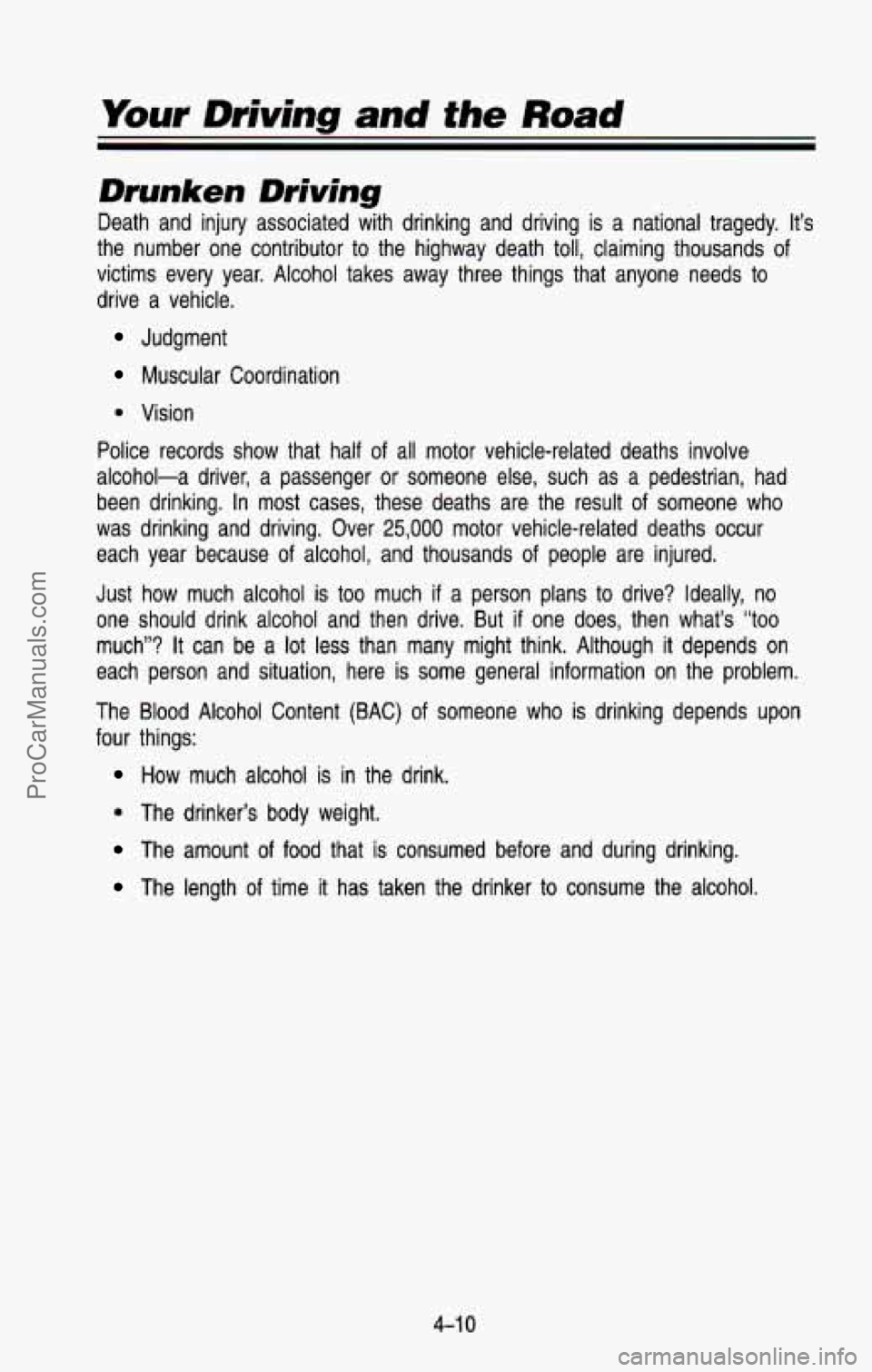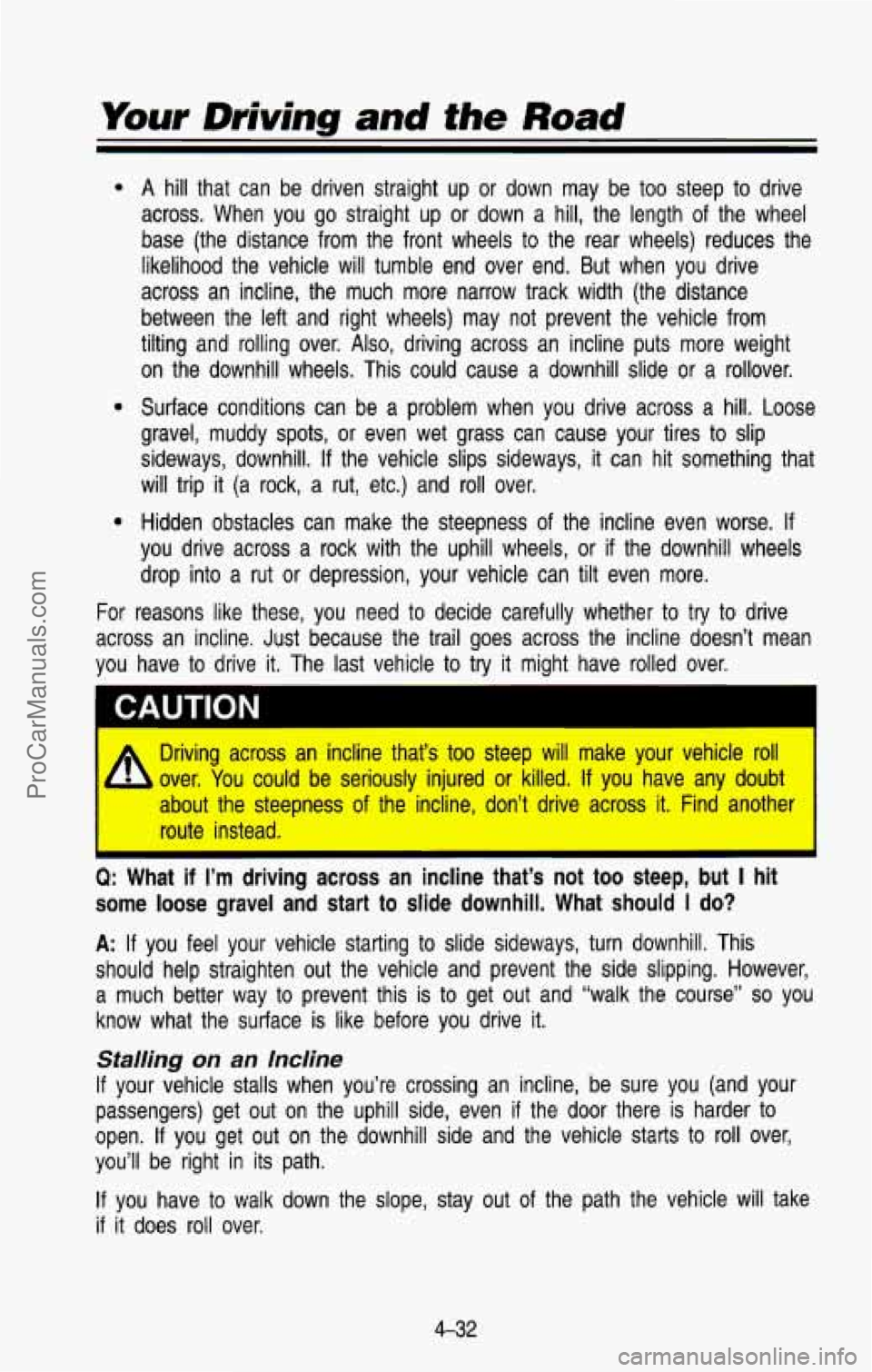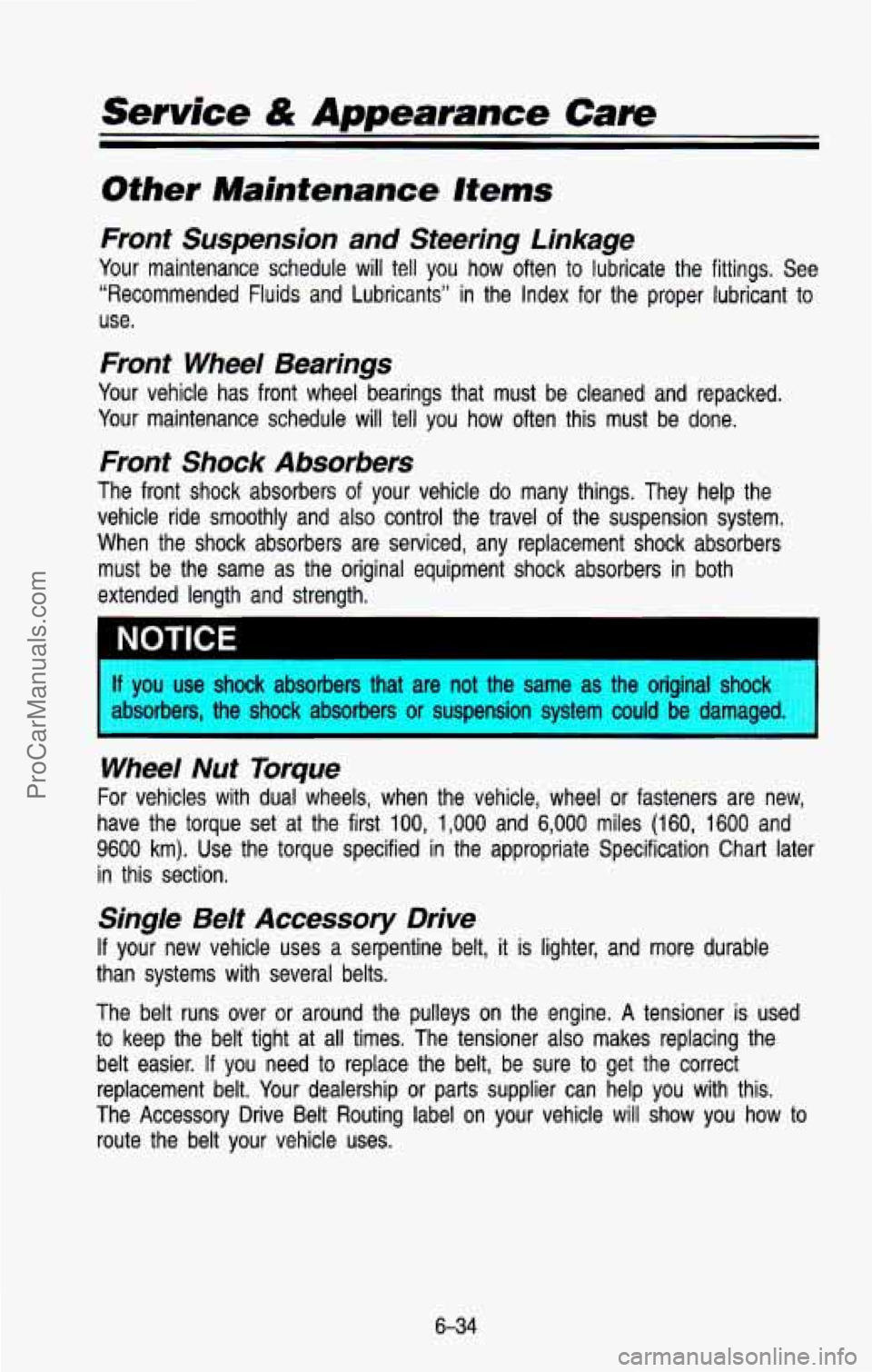Page 177 of 386

Drunken Driving
Death and injury associated with drinking and driving is a nat\
ional tragedy. It’s
the number one contributor to the highway death toll, claiming thousands of
victims every year. Alcohol takes away three things that anyone\
needs to drive a vehicle.
Judgment
Muscular Coordination
4 Vision
Police records show that half of all motor vehicle-related deat\
hs involve
alcohol-a driver, a passenger or someone else, such as a pedestrian, had
been drinking. In most cases, these deaths are the result
of someone who
was drinking and driving. Over
25,000 motor vehicle-related deaths occur
each year because
of alcohol, and thousands of people are injured.
Just how much alcohol
is too much if a person plans to drive? Ideally, no
one should drink alcohol and then drive. But
if one does, then what’s “too
much”? It can be a lot less than many might think. Although it depends on
each person and situation, here is some general information on \
the problem.
The Blood Alcohol Content (BAC)
of someone who is drinking depends upon
four things:
How much alcohol is in the drink.
4 The drinker’s body weight.
The amount of food that is consumed before and during drinking.
The length of time it has taken the drinker to consume the alcohol.
4-1 0
ProCarManuals.com
Page 199 of 386

Your Driving and the Road
0
0
For
A hill that can be driven straight up or down may be too steep to drive
across. When you go straight up or down a hill, the length o\
f the wheel
base (the distance from the front wheels to the rear wheels) reduces the
likelihood the vehicle will tumble end over end. But when you drive
across an incline, the much more narrow track width (the dist\
ance
between the left and right wheels) may not prevent the vehicl\
e from
tilting and rolling over.
Also, driving across an incline puts more weight
on the downhill wheels. This could cause a downhill slide
or a rollover.
Surface conditions can be a problem when you drive across a
hill. Loose
gravel, muddy spots, or even wet grass can cause your tires to slip
sideways, downhill.
If the vehicle slips sideways, it can hit something that
will trip
it (a rock, a rut, etc.) and roll over.
Hidden obstacles can make the steepness
of the incline even worse. If
you drive across a rock with the uphill wheels, or if the do\
wnhill wheels
drop into a rut or depression, your vehicle can tilt even more.
reasons like these, you need to decide carefully whether to try to drive
across an incline. Just because the trail goes across the incline doesn’t mean
you have to drive it. The last vehicle to try it might have rolled over.
CAUTION
A
Driving across an incline that’s too steep will make your vehicle roll
over. You could be seriously injured or killed.
If you have any doubt
about the steepness of the incline, don’t drive across it. \
Find another route instead.
I
Q: What if I’m driving across an incline that’s not too steep, but I hit
some loose gravel and start
to slide downhill. What should I do?
A: If you feel your vehicle starting to slide sideways, turn down\
hill. This
should help straighten out the vehicle and prevent the side sl\
ipping. However, a much better way to prevent this is to get out and “walk the course”
so you
know what the surface is like before you drive
it.
Stalling on an Incline
If your vehicle stalls when you’re crossing an incline, be sure you (and your
passengers) get out on the uphill side, even
if the door there is harder to
open.
If you get out on the downhill side and the vehicle starts to roll over,
you’ll be right in its path.
If you have to walk down the slope, stay out of the path the vehicle will take
if it does roll over.
4-32
ProCarManuals.com
Page 299 of 386

Service & Appearance Care
Front Suspension and Steering Linkage
Your maintenance schedule will tell you how often to lubricate the fittings. See
“Recommended Fluids and Lubricants” in the Index for the \
proper lubricant to
use.
Front Wheel Bearings
Your vehicle has front wheel bearings that must be cleaned and repa\
cked.
Your maintenance schedule will
tell you how often this must be done.
Front Shock Absorbers
The front shock absorbers of your vehicle do many things. They help the
vehicle ride smoothly and also control the travel of the suspension system.
When the shock absorbers are serviced, any replacement shock ab\
sorbers must be the same as the original equipment shock absorbers in \
both
extended length and strength.
Wheel Nut Torque
For vehicles with dual wheels, when the vehicle, wheel or fast\
eners are new,
have the torque set at the first
100, 1,000 and 6,000 miles (160, 1600 and
9600 km). Use the torque specified in the appropriate Specification \
Chart later
in this section.
Single Belt Accessory Drive
If your new vehicle uses a serpentine belt, it is lighter, and more durable
than systems with several belts.
The belt runs over or around the pulleys on the engine.
A tensioner is used
to keep the belt tight at all times. The tensioner also makes replacing the
belt easier. If you need
to replace the belt, be sure to get the correct
replacement belt. Your dealership or parts supplier can help you with this.
The Accessory Drive Belt Routing label on your vehicle will sh\
ow you how to route the belt your vehicle uses.
6-34
ProCarManuals.com